Winter's Flute
curling bark & bright berries
Fathers of the grassland
speak to us
you who are us
Keepers of the river tracks
cattle watchers
you whose bones guard our ground
whose footsteps mark our valleys
let the trees carry
your hunting cries
let your stories
settle our fires
You who have gone to longer lives
know us
speak to us
you who are us
Victor Tapner, ‘Herdsmen’ from Flatlands
Hello lovely friends, and happy new moon in Scorpio!
Today (13 November) is Old All Hallows’ Eve, so tomorrow is Old All Saints’ Day and 15 November, Old All Souls’ Day. I wish you a peaceful and quietly reflective Tide in the midst of chaotic times. Here, it’s all blazing bracken and wild goose cries but I hope the small beauties of your own land are bringing a little joy to your soul.
Acorn Wood bracken, 11 November 2022.
A soul, a soul, a soul cake
Please good mistress a soul cake
An apple, a pear, a plum or a cherry
Any good thing to make us all merry
One for Peter, two for Paul,
Three for him that made us all.
Traditional
Simon’s soul cake, Wood Dalling church, Norfolk. 15 November 2007.
Exactly 16 years ago, I spent Old All Souls’ Day in a medieval church, alone. The visit was part of a year-long project where I felt my way into working with some of the most significant seasonal festivals and feast days through actions and interventions.
The twist was that every festival - Rogationtide, Corpus Christi, the Three Midsummer Bonfire Saints, St Christopher’s Day, Assumption, Michaelmas, All Souls’, Christmas, Candlemas, Palm Sunday and Easter - was marked 13 days later than the dates we know today, at the point where they would have fallen before the calendar change of 1752. Among many other things, that year taught me how very different the festivals feel when you celebrate them later in the season, at the time that they would have been observed in the medieval era.
‘The air in the medieval church of St Andrew is thick with presence. Mid-November, winter’s approach. All Souls’ Day according to the Julian calendar which would have marked the days, weeks and months in those times. Ancient inscriptions on slivers of brass let into the stone floors commemorate twelve medieval villagers, some of these made more visceral by portraits etched into the metal. John, John, John, John, William, Thomas, Thomas, Richard, Katherine, Simon, Lettice, Robert. Their names are hard to decipher between the spidery Latin on either side, but there they are. And there they have been, for 500 years or more. I want to give them a party, to stir their souls and let them know they are remembered. After all, that’s why those brasses were positioned where friendly steps would pass over them and ease their passage through purgatory.
I decide that, if I am going to eat Soul Cakes myself I should go the extra mile and make a special fairy cake for each of the named men, women and children who lie under these dully-gleaming portals. They will be as jolly as I can make them, as befits a celebration. I make 12 fairy cakes and ice them using the brightest pink food colouring I can find. Then, with a wobbly but loving hand, I ice each of their names in melted chocolate and scatter multicoloured sugar balls over the top.
Does the air change as I move quietly from brass to brass, making my offerings? The lofty nave is chill. and someone has erected plastic sheeting on either side to try to hold in a little warmth. Gently, almost imperceptibly, the ghostly hangings sway. Is it my fancy or can I feel a slight exhalation, a wisp of breath that twists and rises with my own?’
Poppyhead shadow, 15 November 2007, Wood Dalling church, Norfolk.
The Green Children: a Folk Tale for Martinmas
We may be deep in Old Hallowtide, but let’s not forget Martinmas which falls on 11 November and is also strongly tied in with themes of remembrance and this season of shifting veils. You will probably not be surprised to hear that we’ll be talking about this in the Bracken & Wrack full moon newsletter around Old Martinmas, but meanwhile I wanted to share with you a video I made a year ago, during which I walk through Crow Wood recounting the tale of The Green Children of St Martin’s Land.
Southwest sunset
catches the trees, splays
out their shapes like spread
nerves, webbed and strung
vessels of drowsy fluid,
warming dull stalks to a richer
brown, until the wind
lifts heavy wings and all colours
flatten out. A long note
sounds in our chimney: winter’s flute
blowing from the throats
of reeds in the waste ground
down by the river. The dead
once fished there, dragged their nets,
crouched in the sedge for duck
and plover, stole eggs in spring.
They sheltered under reeds
in these sodden hills;
reed roofs and low stone walls
tucked down to earth,
shut in from the flapping light.
Hilary Llewellyn-Williams, excerpt from ‘Reed/Ngetal (October 28 - November 24)’, The Tree Calendar
Watery alder carr at sunset, 17 November 2022.
Travelling the Track
Birch Track candle vessel among the birch trees, November 2021.
Two years ago at this time, I was introducing ‘Birch Track’ my seasonal candle for the midwinter solstice from the cycle of story candles I was deep within at the time. Looking back, it was one of my favourites, both in the landscape setting (the clue is in the name!) and in the blend of essential oils. It was, I must say, a challenge to evoke the feeling of a wintry wood using only natural oils but I was very happy with the result (hint: the secret is in the birch tar). If you’d like to try blending something similar you’ll find the ingredients in one of the stories below. I used quite a few oils in my blend, but you could always just choose 4 - 5 and I think the result will still be pretty midwinter-y.
Not, of course, that I’m wishing midwinter upon us in the middle of November but it’s as well to be prepared ;) The blend can be used in other ways too, maybe in an oil burner or spritz.
This is how the story began …
IN WHICH WE SET OUT ALONG THE TRACK
The Birch Track is the path I walk in my native Norfolk, Land of the Eceni, which wends this way and that across fields, woods, gorse-bedecked heathland and the wide North Sea. It inspires the things I make and the words I write.
But it’s far more than a literal track, as we shall see.
I don’t yet know what we will uncover under that soft golden bed of fallen birch leaves … but I can promise icy northern magic, bright toadstools, lace-edged deer tracks and always the silvery glimmer of birch-bark to lure us deeper between the trees.
So, if you’d like to pull on your backpack with its flask of steaming chocolate and a St Lucy cake for the journey, let’s get going.
ON THE WILD EDGE
We have always been walking through this land.
We have always worn its vision like a skin
but on the inside.
There has never been a time
when this river has not chilled our veins.
The track is strongly felt.
We are walking, walking as before
and our footsteps fit …
Carolyn Hillyer, from Walking As Before
Of course it must be understood that the Birch Track has no geographical location that can be marked or pinned down onto a map. Rather, it is the meandering silvery thread of lane, stream, snaking hedgerow and all the intangible currents that flow through the land even as its green beings sink into their winter slumber.
And we all walk this track, just as we have always done.
Why birch? Because birch is an adventurer, the first to re-root in these lands after the last Ice Age. Birch, because it stands on the wild edge between earth and sky, cliff-top and pounding seas. Birch reflects the moon and her magic, lighting our path with a pale and dancing luminosity.
We stretch out a finger for the feel of its curling bark and it answers us, skin to skin. We place a palm against its soft pulse and find a sharp diamond impressed indelibly upon it.
I can feel the stories shifting and jostling. Tales of fire and ice, of moss-maidens and the wild horde, of merry misrule and strings of bright berries.
SNIFFING THE AIR
You who bore winters nine
swaddled in a veil
spun from life and death.
Out of mother’s deep womb,
into the green world.
Die and be reborn.
Wardruna, Bjarkan (birch rune)
Ahead of me lies the Birch Track. But as I spin around, the track snakes behind me as far as the mind can imagine or the tongue can taste. How to capture this in a fleeting scent? I crouch on my haunches and ask the rich bronze compost that trickles through my fingers.
I sniff the air like a deer, alert for signals on the breeze.
Beorc/Berkana/Bjarkan/Birch rune, wood ash. Acorn Wood, November 2021.
Birch was first, but pine was there at her shoulder and now the resinous aroma of PINE NEEDLE oozes into my consciousness along with fainter notes of SIBERIAN FIR NEEDLE, CEDARWOOD and JUNIPER BERRY. Reedy, carolling voices drift across from the snowy lands of the north, their singing-bowl harmonics striking something ancient in my soul.
Next, spices birthed in trees: NUTMEG, BLACK PEPPER, CINNAMON. A cottage window further down the lane stands ajar, and the scent of Christmas baking wafts and weaves with those of their wild kin.
Perhaps the sharper, sweeter notes that reach me are the swan song of the crumpled fern fronds, or the few fairy-flag leaves left swinging. Or perhaps the MANDARIN and GRAPEFRUIT aromas floating above the soft earth sing of the age-old festival of the returning light, their bright fruits mimicking the brilliance of the winter sun at its rising and setting.
A winter festival. FRANKINCENSE and MYRRH whisper of timely ritual and mystery, offerings to the new-born Sun.
There is something else, undefinable but exciting; sweet and smoky. It’s VETIVER, and it’s intoxicating. But still I’m restless, with an inexplicable feeling that something unseen lies around the next meander. I rise slowly to my feet, brushing leaf-litter and dark spindly twigs from my skirt. Tiptoeing further I stop and raise my face to the north wind, breathing in every nuance. BIRCH TAR! I know the scent well from my little wood-stove at The Old Shop, but out here where all the senses are at nerve-ends it is thrilling and deep and ancient and magical.
And then I come to a ring of spent ashes, pale and glimmering as birch bark itself.
The children hastening in from threatening rain
No longer round the fields for wild fruit run
But at their homes from morn till night remain
And wish in vain to see the welcome sun.
Winter’s imprisonment is all begun
Yet when the wind grows troubleous and high.
Pining for freedom like a lovesick nun,
Around the garden’s little bounds they fly
Beneath the roaring trees fallen apples to espy.
But spite of all the melancholy moods
That out of doors poor pleasure’s heart alarms -
Flood bellowing rivers and wind roaring woods -
The fireside evening owns increasing charms;
What with the tale and eldern wine that warms
In purple bubbles by the blazing fire
Of simple cots and rude old fashioned farms
They feel as blessed as joys can well desire
And midnight often joins before the guests retire.
John Clare, from ‘St Martin’s Eve’
Between Goose-cry and Honeyed Root
Ancient oaks encircle Acorn Wood, their bark rippling as rivers between goose-cry and honeyed root. As winter draws near, so the stream quietens to a trickle.
Within the circle, birches dance across the track in their pale gowns and wild dark tresses. See them leap hand-in-hand over the gently dissolving bracken, its brittle bones strewn like cast runes.
Bloodveil Hill
I wove between head-high bracken on either side of the narrow path, aware that dusk was waiting to settle. Jewel-bright and smelling of earth and cider, a dissolving crab apple halo around the tree betrayed its presence long before my eye picked out its gold.
And then - the barrow with its encircling ditch to traverse if you would climb the hill and partake of its mysteries. In another life I had marked it with a cross and named it Bloodveil.
Of course, I climbed.
Incense smoke swirled in a reused River Song vessel; the Samhain incense we had burned on the day of that other walk. We had wafted it over our wondering companions with a wild goose feather.
There was rich hot chocolate in a flask. Enough to share with the ancestors and the Fair Folk. I lit my Earth Chant candle, its crackle loud in my ears. Then I took up my inherited drum, you know, the one with the buzzard painted on it, and played.
Until next time.
With love, Imogen x


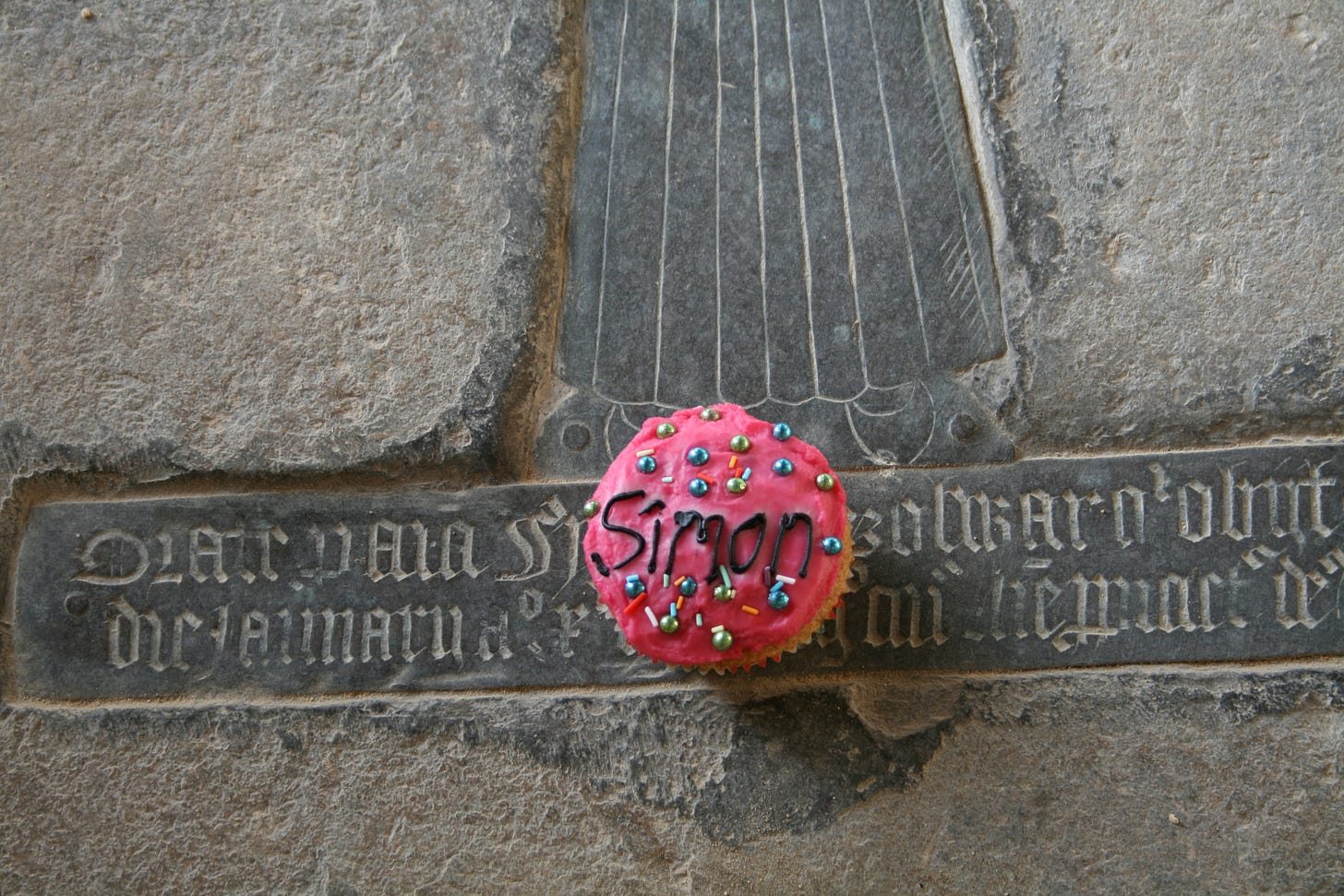

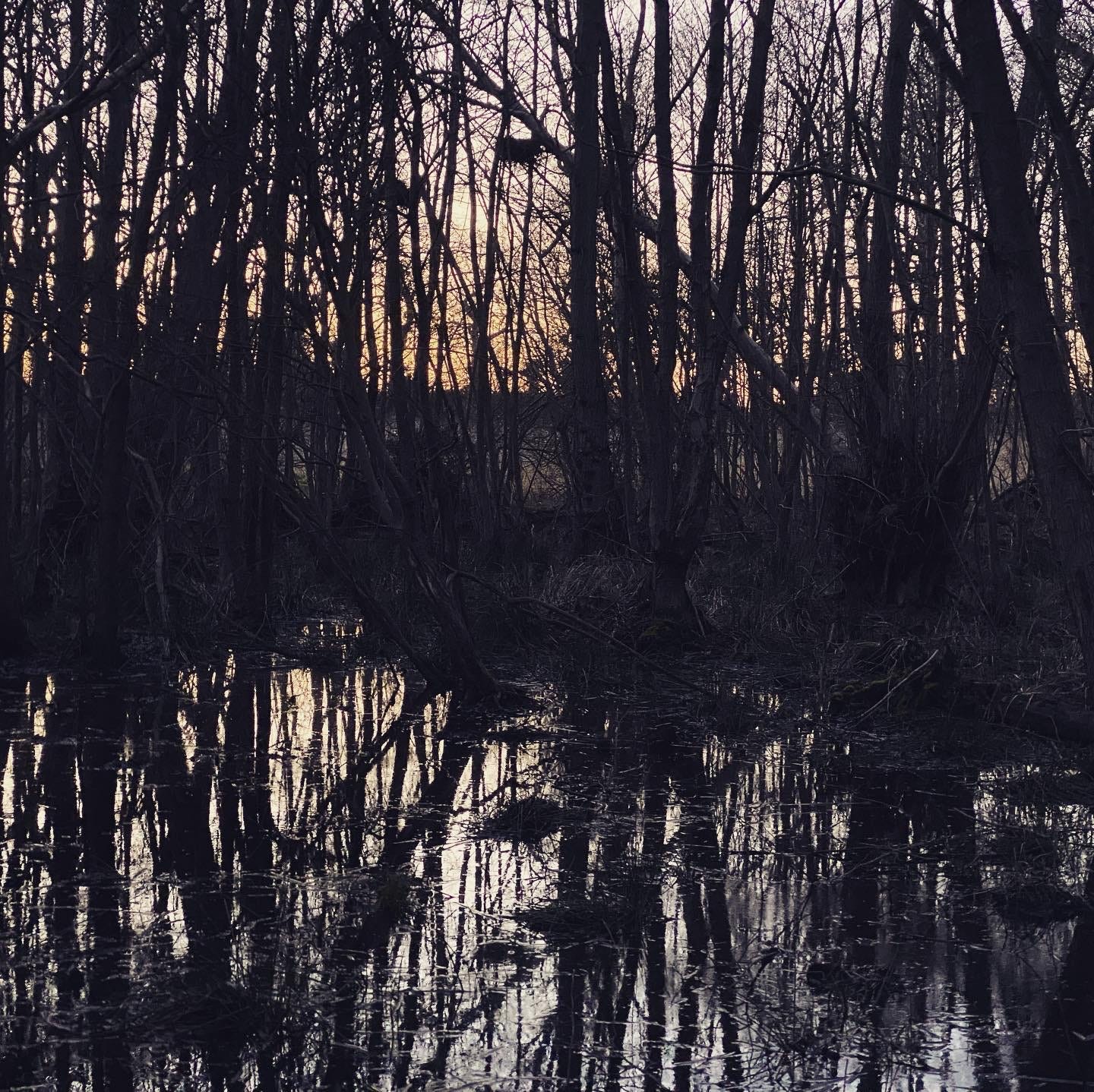
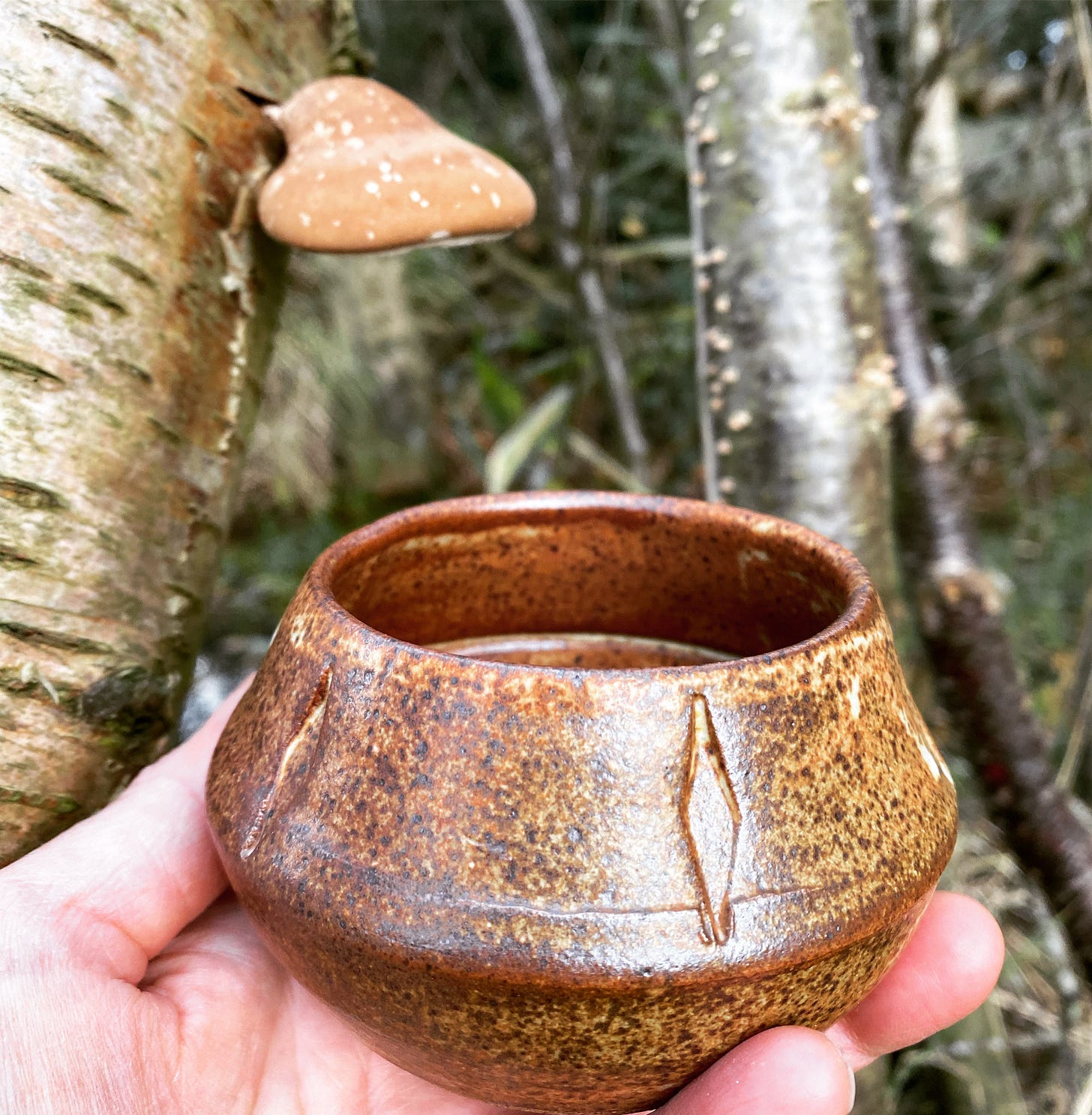
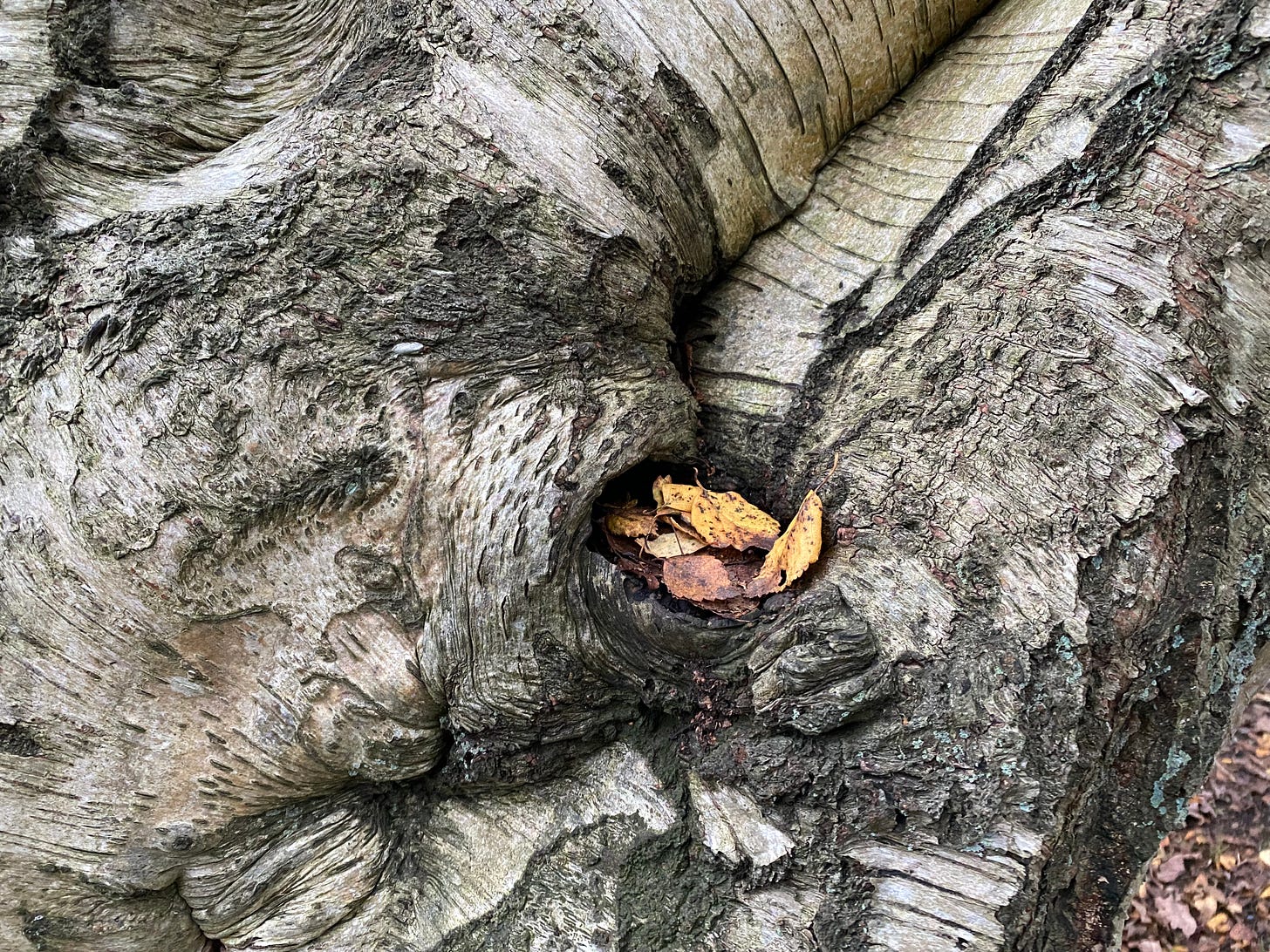


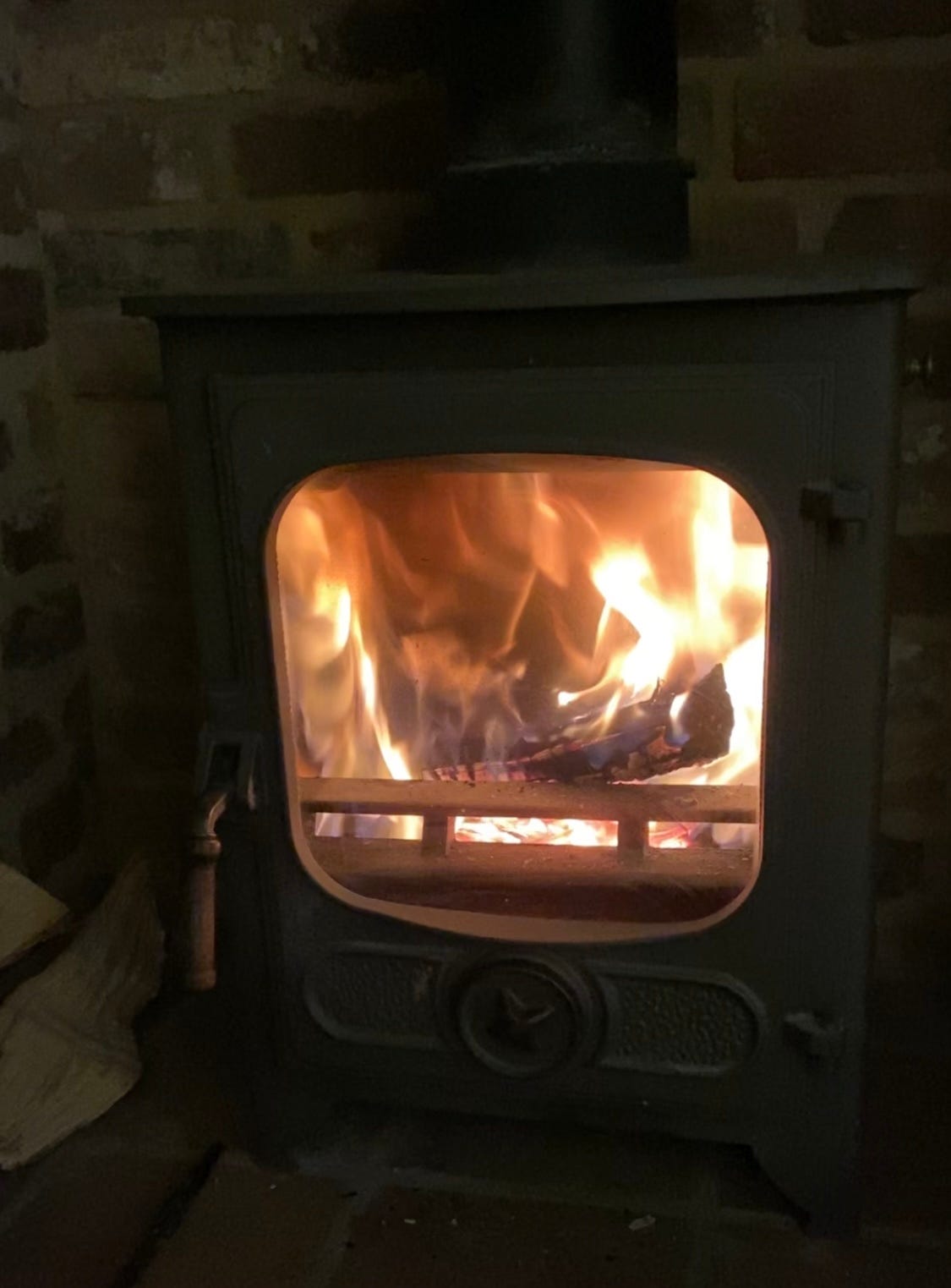
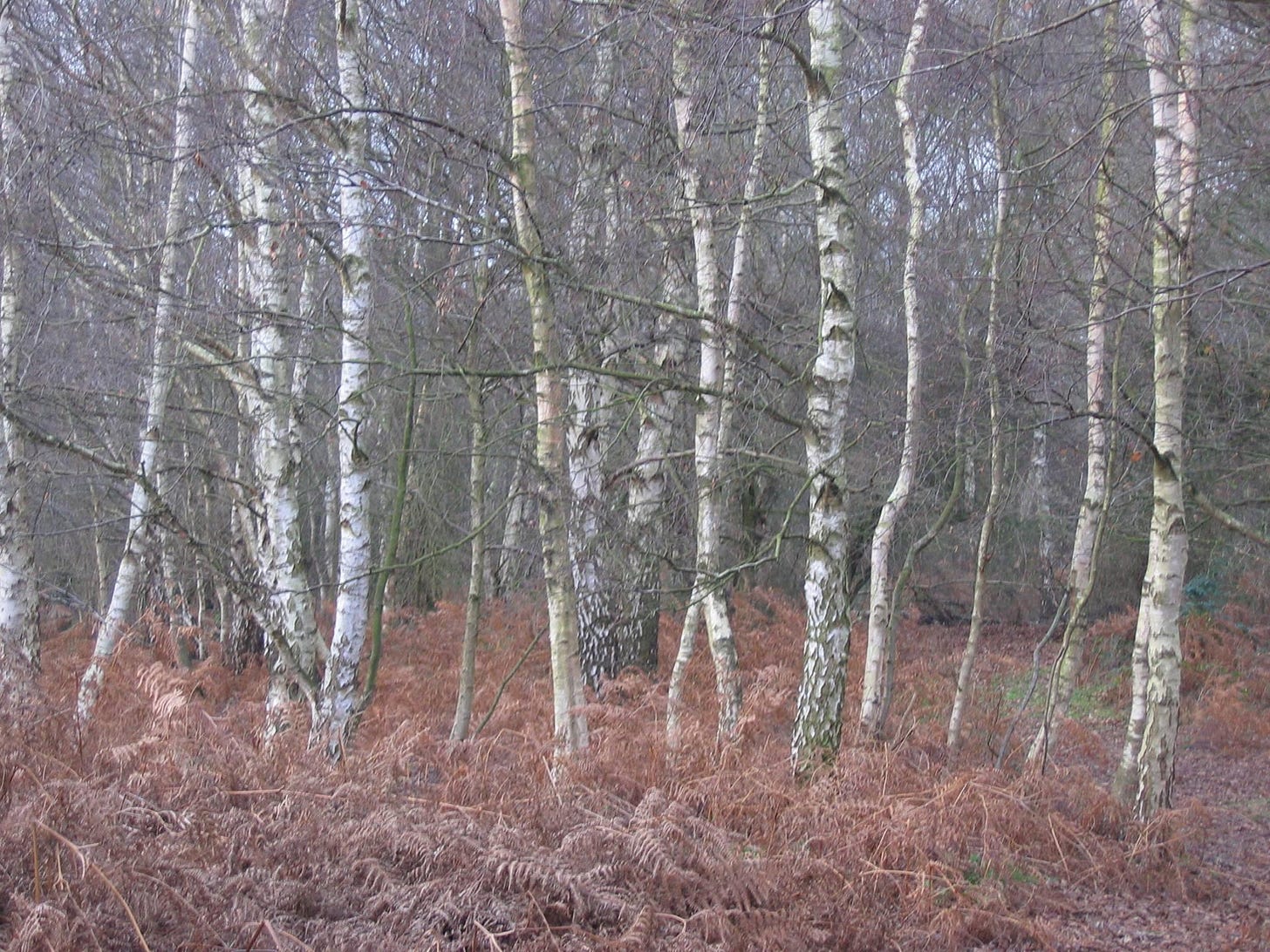
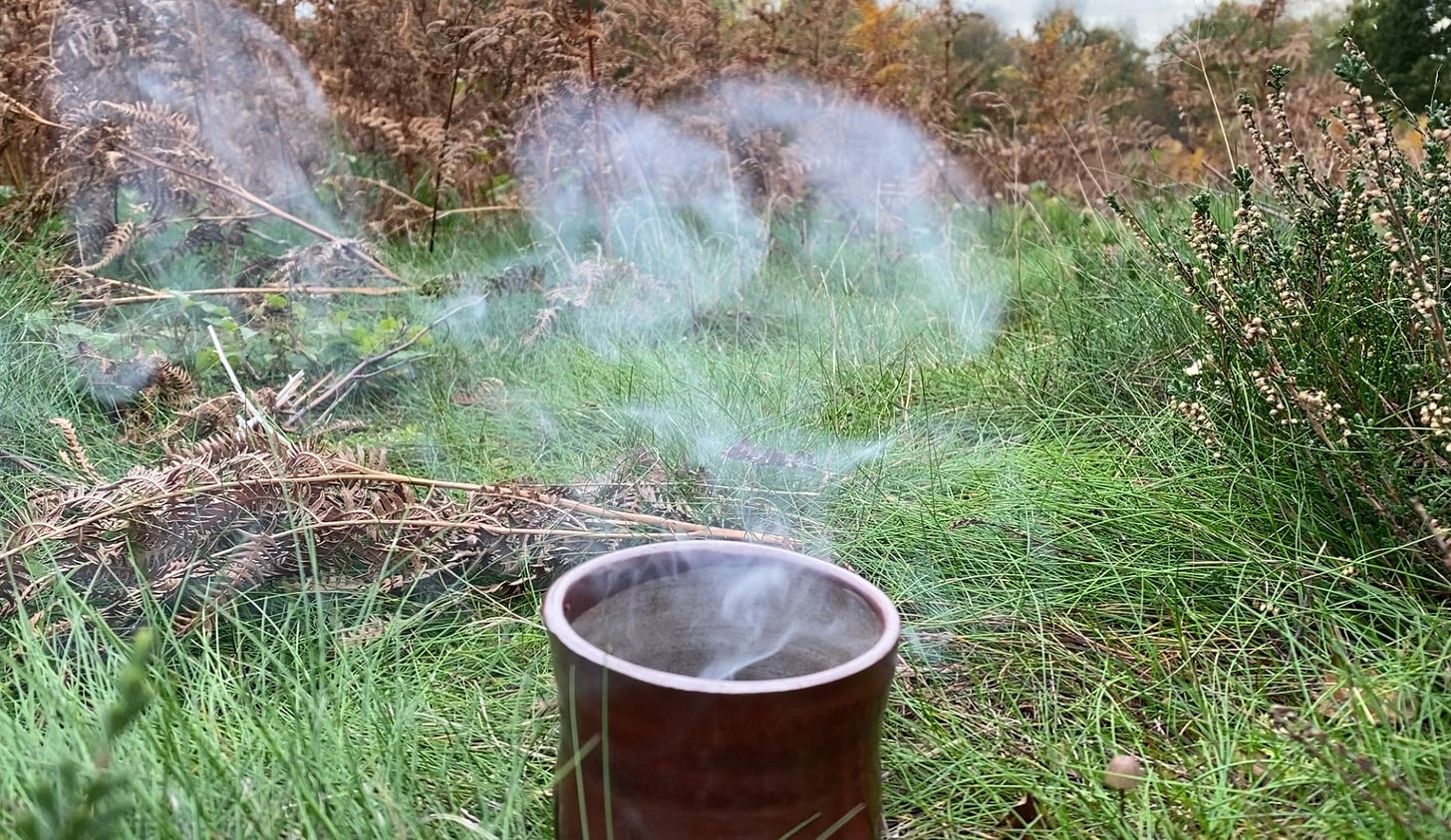
Love this Imogen 🌿🙏🏻
I don’t know much about the ice age. Did it cover the earth? And did all plants die? I wonder if it hit Australia. The land here has its own story. I don’t know it. Among the native eucalyptus, we have pine, oak and others, seeking an existence in a land as foreign to them as it is to me. But both placed here by fate, providence, call it what you will. Trying to weave our story